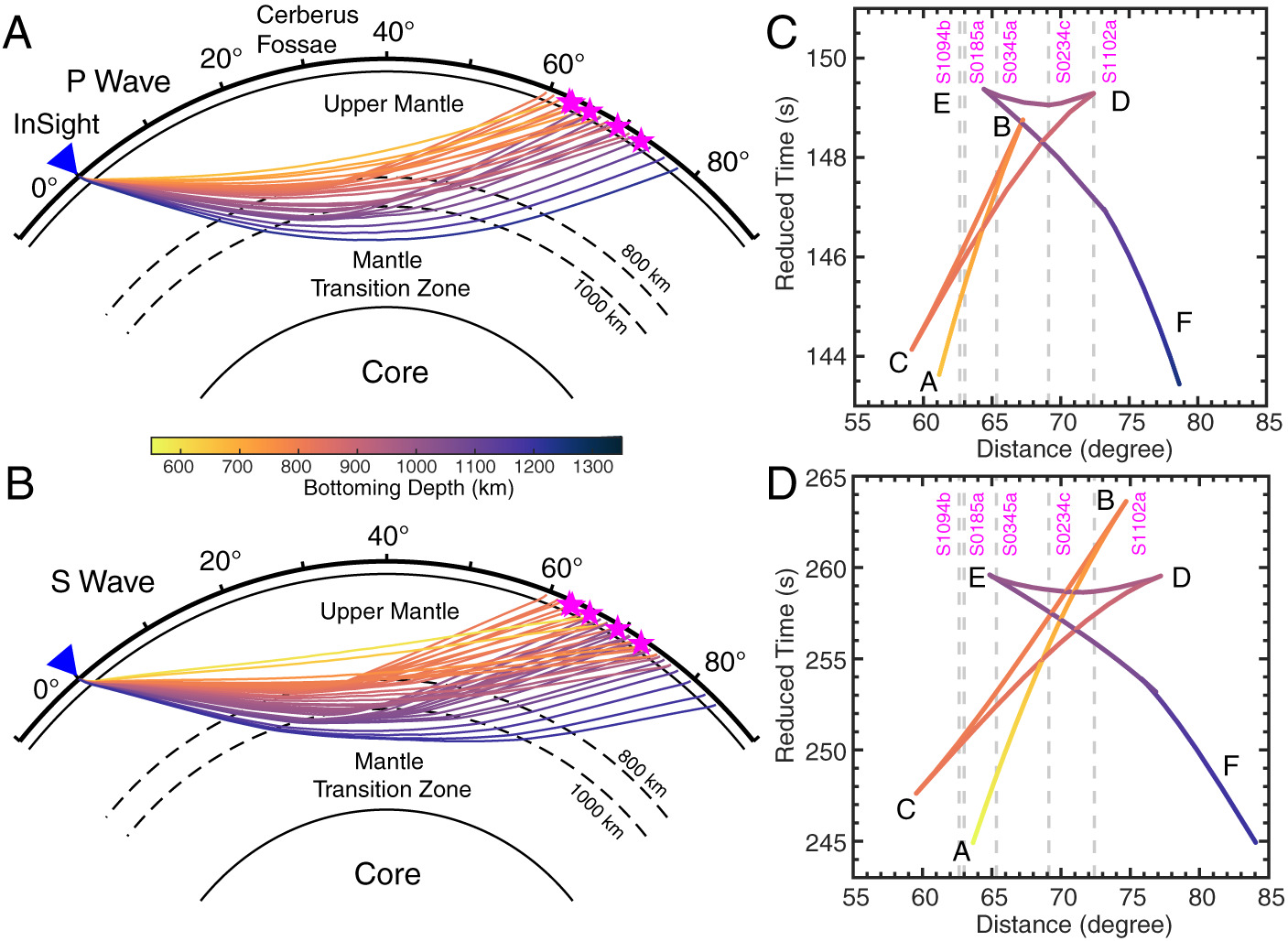The paper “Seismic detection of a deep mantle discontinuity within Mars by InSight” led by Quancheng Huang is out!
Summary: The depth and sharpness of a midmantle seismic discontinuity, associated with the phase transition from mineral olivine to its higher-pressure polymorphs, provide essential clues to understanding the temperature and composition of Martian mantle. Using data from NASA’s InSight mission, we examined five marsquakes located 3,400 to 4,400 km away from the InSight lander and observed triplications of the P and S waves that resulted from the interaction with a seismic discontinuity produced by the postolivine transition. Our observations indicate that the Martian mantle is more iron rich than Earth,and both planets have a similar potential temperature. Our geodynamic modeling further constrains the mantle composition and surface heat flow and indicates that the mantle was cold in the early Noachian.
Huang, Q., N.C. Schmerr, S.D. King, D. Kim, A. Rivoldini, A. Plesa, H. Samuel, R.R. Maguire, F. Karakostas, V. Lekić, C. Charalambous, M. Collinet, R. Myhill, D. Antonangeli, M. Drilleau, M. Bystricky, C. Bollinger, C. Michaut, T. Gudkova, J. C.E. Irving, A. Horleston, B. Fernando, K. Leng, T. Nissen-Meyer, F. Bejina, E. Bozdağ, C. Beghein, L. Waszek, N. C. Siersch, J.-R. Scholz, P. M. Davis, P. Lognonné, B. Pinot, R. Widmer-Schnidrig, M. P. Panning, S. E. Smrekar, T. Spohn, D. Giardini, W. B. Banerdt, Seismic detection of the Martian mantle transition zone by InSight, PNAS, doi: 10.1073/pnas.2204474119
https://www.pnas.org/doi/10.1073/pnas.2204474119

